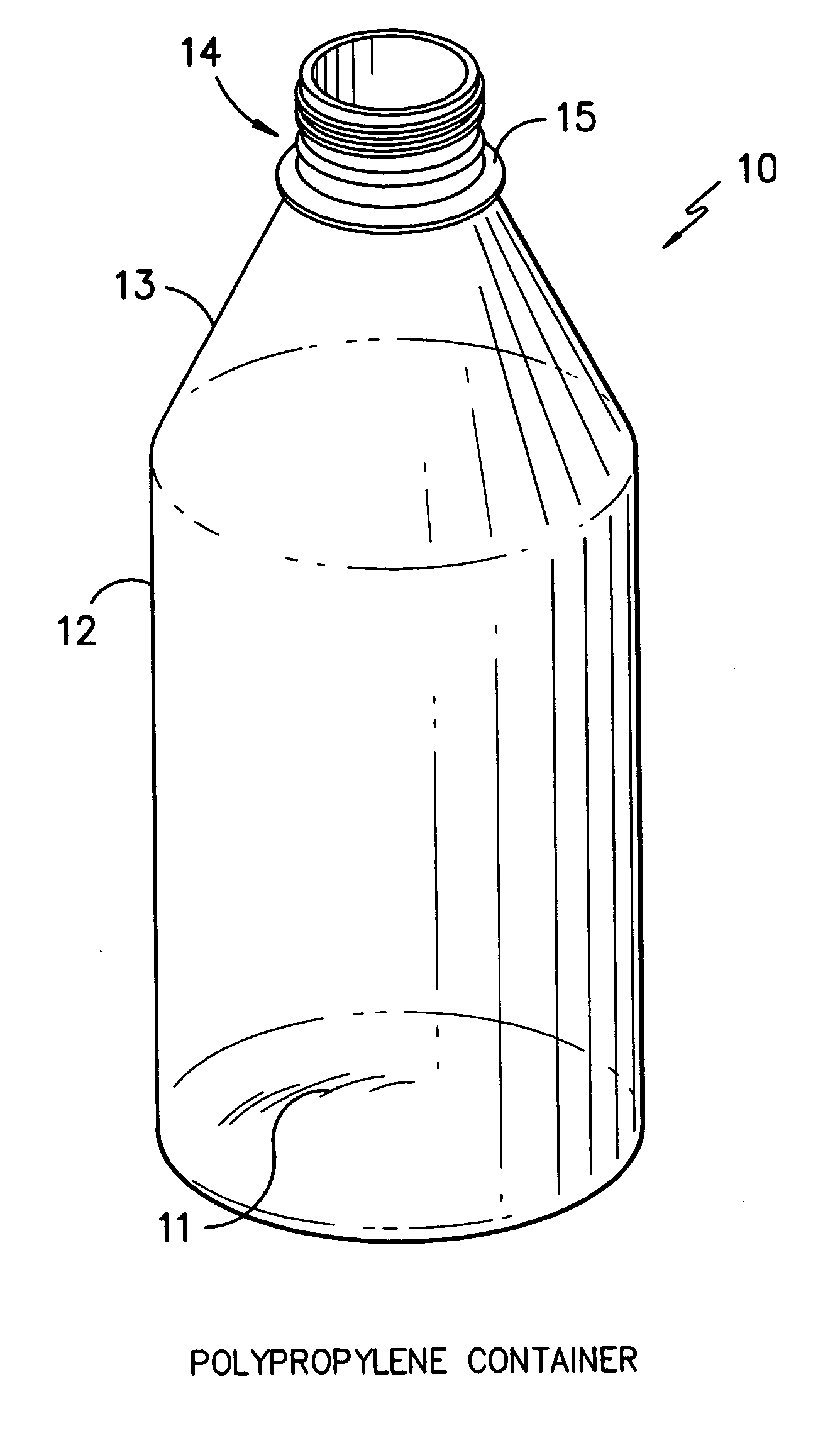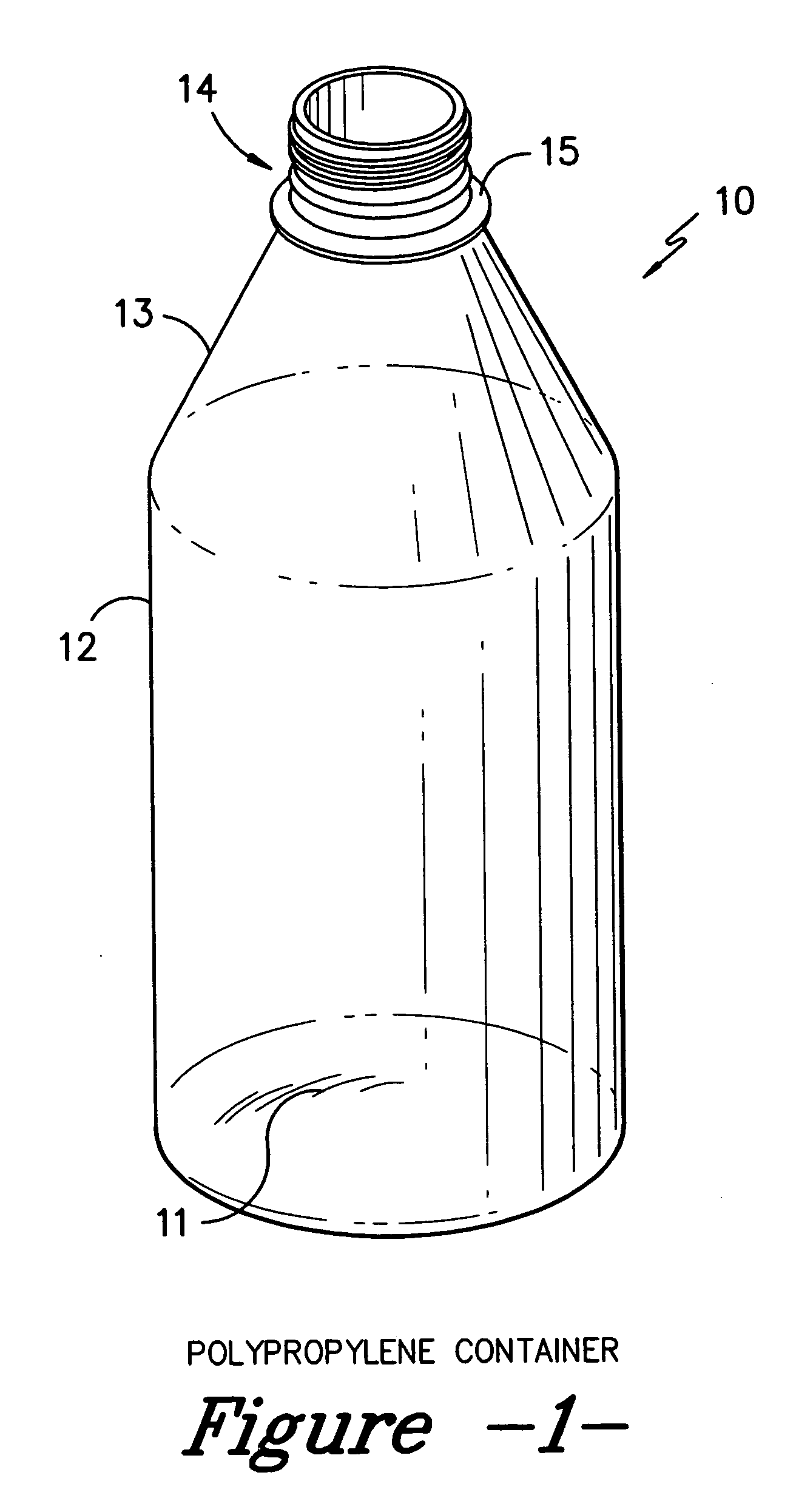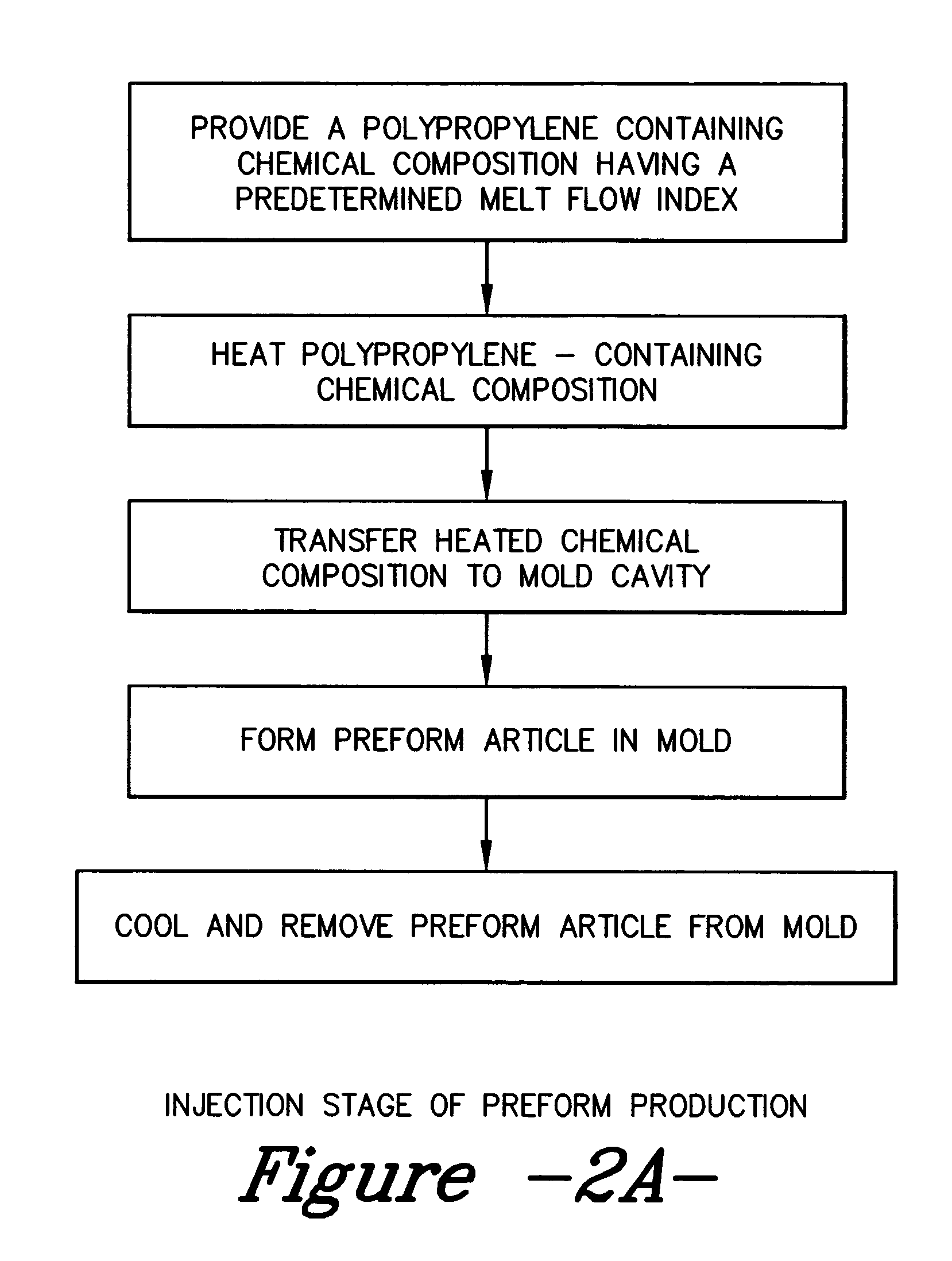Articles and process of making polypropylene articles having ultraviolet light protection by injection stretch blow molding of polypropylene
a technology of polypropylene and ultraviolet light protection, which is applied in the direction of transportation and packaging, other domestic articles, synthetic resin layered products, etc., can solve the problems of large size and compactness, large volume of polypropylene, and insignificant replacement of polypropylen
- Summary
- Abstract
- Description
- Claims
- Application Information
AI Technical Summary
Problems solved by technology
Method used
Image
Examples
example 1
Control Preforms Containing No UV Absorber
[0099] A commercial random copolymer resin containing Millad 3988 (Borealis RM365MO) was used. The extrusion conditions were standard on the MPM extruder for polypropylene (barrel zone temperatures of 400° F., 425° F., 450° F., die temperature of 450° F.). The preforms were produced on a 90-ton Husky injection-molding machine with a two-cavity mold. The total cycle time was 22.47 seconds, with 11 seconds of cooling and holding time of 3.8 seconds. Barrel temperature was set at 250° C. and mold temperatures were 16° C. The preforms had a final weight of 21.3 grams. The preforms were later blow molded into bottles using the procedure described below.
example 2
Preforms with 1200 ppm of UV Absorber
[0100] A commercial random copolymer resin containing Millad 3988 (Borealis RM365MO) was compounded at a 1200 ppm total loading of UV absorber compounds (80% Tinuvin 326 / 20% Cyasorb 531 by weight) on an MPM extruder. The extrusion conditions were standard on the MPM extruder for polypropylene (barrel zone temperatures of 400° F., 425° F., 450° F., die temperature of 450° F.). The preforms were produced on a 90-ton Husky injection-molding machine with a two-cavity mold. The total cycle time was 22.47 seconds, with 11 seconds of cooling and holding time of 3.8 seconds. Barrel temperature was set at 250° C. and mold temperatures were 16° C. The preforms have a final weight of 21.3 grams. The preforms were later blown into bottles using the procedure described below.
example 3
Preforms with 2400 ppm UV Absorber
[0101] A commercial random copolymer resin containing Millad 3988 (Borealis RM365MO) were compounded at a 2400 ppm total loading of UV absorber compounds (80% Tinuvin 326 / 20% Cyasorb 531 by weight) on an MPM extruder. The extrusion conditions were standard on the MPM extruder for polypropylene (barrel zone temperatures of 400° F., 425° F., 450° F., die temp of 450° F.). The preforms were produced on a 90-ton Husky injection-molding machine with a two-cavity mold. The total cycle time was 22.47 seconds, with 11.00 seconds of cooling and holding time of 3.8 seconds. Barrel temperature was set at 250° C. and mold temperatures were 16° C. The preforms have a final weight of 21.3 grams. The preforms were later blown into bottles using the procedure described below.
Procedure of Injection Stretch Blow Molding Preforms into Bottles
[0102] Polypropylene bottles (500 ml) were blown at high speed (1,500 bottles / cavity / hour) on a Sidel SBO-8 Series-II stretch...
PUM
| Property | Measurement | Unit |
|---|---|---|
| thickness | aaaaa | aaaaa |
| temperature | aaaaa | aaaaa |
| temperature | aaaaa | aaaaa |
Abstract
Description
Claims
Application Information
 Login to View More
Login to View More - R&D
- Intellectual Property
- Life Sciences
- Materials
- Tech Scout
- Unparalleled Data Quality
- Higher Quality Content
- 60% Fewer Hallucinations
Browse by: Latest US Patents, China's latest patents, Technical Efficacy Thesaurus, Application Domain, Technology Topic, Popular Technical Reports.
© 2025 PatSnap. All rights reserved.Legal|Privacy policy|Modern Slavery Act Transparency Statement|Sitemap|About US| Contact US: help@patsnap.com



